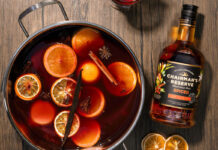Rich range of different flavours should be embraced by on-trade

IT is said that humans can only discern five tastes on the tongue.
If that’s true, gin and mixer producers have managed to create an impressive range of flavours with these five basic sensations.
The rainbow of releases for licensees to tap into means there’s a seemingly endless list of possible flavour combinations to offer in both gin/mixer serves and in cocktails.
And those operators who do harness the many tastes the category has to offer can create a compelling menu that keeps customers coming back for more.
“It’s very important that pub operators’ mixers and tonics match the quality of spirits on offer,” said Andrew Jackson, marketing director for craft mixer brand Fentimans.
“Operators should take time to experiment with their spirits ranges so they know what flavours best suit and then pair them accordingly.
“With customers expressing an increasing interest in more unusual flavours, operators should look at becoming more creative and consider extending their ranges with products that differ from the usual market offering.”
Jen Draper, head of marketing at Franklin & Sons, took a similar view, and reckons licensees should look to embrace new flavours and use them to their advantage.
She said: “With consumers becoming more adventurous and experimental, flavoured gin is no longer a rarity, with fruity flavoured gin, such as pink and violet gin, opening up the spirit to a whole new audience.
“This has resulted in increasing demands on tonic water to keep up with gin innovation, while ensuring flavours in these new types of gin are unlocked.
“An alternative pairing for a G&T is to use flavoured tonic water. It’s perfect for mixing with a range of gins to unlock new and interesting flavours.”
Take time to experiment with spirits ranges so you know what flavours best suit and pair them.
With the growing prevalence of premium gins, getting the right match between gins and mixers can “make all the difference”, according to Inverarity Morton’s commercial director, Ian Cumming.
“The flavour interplay between gin and tonic is highly nuanced because you have so many delicate degrees of flavour from the botanicals,” he said.
“If you’re spending money on a good quality gin then you want your tonic in a bottle and preferably one that’s been chosen to bring out the subtle flavours in the gin.”
Niall Macalister Hall, managing director of Beinn an Tuirc Distillers, maker of Kintyre Gin, agreed.
He said: “People like to experiment, in my opinion, and are perhaps drinking less on a night out, but spending the same.
“Visiting a gin or cocktail bar is an experience, and having a premium range of gin and a premium range of tonic can only help each product.”
On a more fundamental flavour point, the number of consumers who wrongly associate the flavour of tonic with gin was raised by Gerry White, founder of Jawbox Spirits, as he advised licensees to offer customers who think they don’t like gin the spirit mixed with ginger ale.
He said: “We’ve found that using ginger ale as a mixer converts many previous non-gin drinkers to gin lovers, as it is often the quinine in the tonic that people don’t enjoy the taste of, thus opening up a new category to them.”
Pink gin has become a key trend within the spirits category, with a seemingly insatiable thirst for the stuff amongst drinkers, but with many variants out there to choose from, Will Holt, co-founder of Pinkster Gin urged operators to “focus on flavour and not just the colour”.
He added: “It’s little surprise to us that the pink gin boom is a trend and we’re embracing it with gusto.”



















